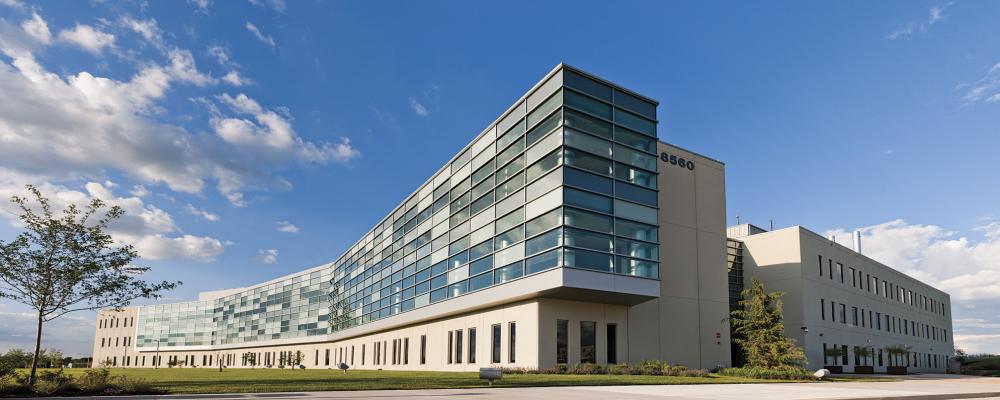By Nancy Parrish, Staff Writer
At a March 2010 gathering at the construction site of the Advanced Technology Research Facility (ATRF), Craig Reynolds, Ph.D., associate director of the National Cancer Institute (NCI), noted that the facility would be a place where public–private partnerships will produce the next generation of diagnostics and treatments for cancer and AIDS. The completion of the facility, he said, “is anticipated by the 1.5 million Americans who get cancer every year….They anxiously await this construction” (News & Views, April 2010, page 3).
Now, the wait is over. Just three years after ground was broken, the ATRF opened its doors in June to sophisticated research laboratories that support the Frederick National Laboratory for Cancer Research (FNL).
The new facility represents “a consolidated source of state-of-the-art technologies and associated expertise made available to researchers both inside and outside of the NCI,” Reynolds said in a recent e-mail. “Access to these technologies will help to reduce the cost and shorten the time to develop new agents for the prevention, diagnosis, and treatment of cancer and AIDS.”
Move Consolidates Labs in 30+ Buildings
The move to the ATRF consolidates staff and operations previously scattered among more than 30 buildings at FNL’s main campus within the perimeter of Fort Detrick. As part of the FNL, which is the only Federally Funded Research and Development Center dedicated exclusively to biomedical research, the ATRF is home to laboratories housing advanced technologies and scientific expertise in genomics, proteomics, and imaging and nanotechnology. In addition, nearly two wings of the facility are devoted to biopharmaceutical development, from feasibility assessment through Phase I/II cGMP manufacturing, as well as regulatory documentation.
The ATRF data center will accommodate the sophisticated data-handling requirements of the advanced research activities housed in the facility. With the ability to manage the massive amounts of data generated by high-throughput genomics, proteomics, imaging, and associated computational requirements, the data center is designed to support current research needs as well as expand to nearly double its capacity to meet future needs.
“By coalescing many of our top technologies into a single state-of-the-art facility, we create a technically sophisticated and highly collaborative environment that is immediately appealing to anyone coming through the building, whether they are scientists or not,” said David Heimbrook, Ph.D., chief executive officer of SAIC-Frederick, the Operations and Technical Support contractor for FNL.
January Completion Anticipated
The laboratories of the Advanced Technology Program and the Biopharmaceutical Development Program relocated to the new facility over the summer, and they will be followed by the Sequencing Facility in the fall. The move is scheduled to be completed in January 2013, when the Center for Cancer Research Molecular Targets Laboratory relocates.
About 250 of FNL’s 2,800 employees will move into the new facility. FNL will continue to maintain the majority of its laboratories, both government and contractor, at the Fort Detrick location.


